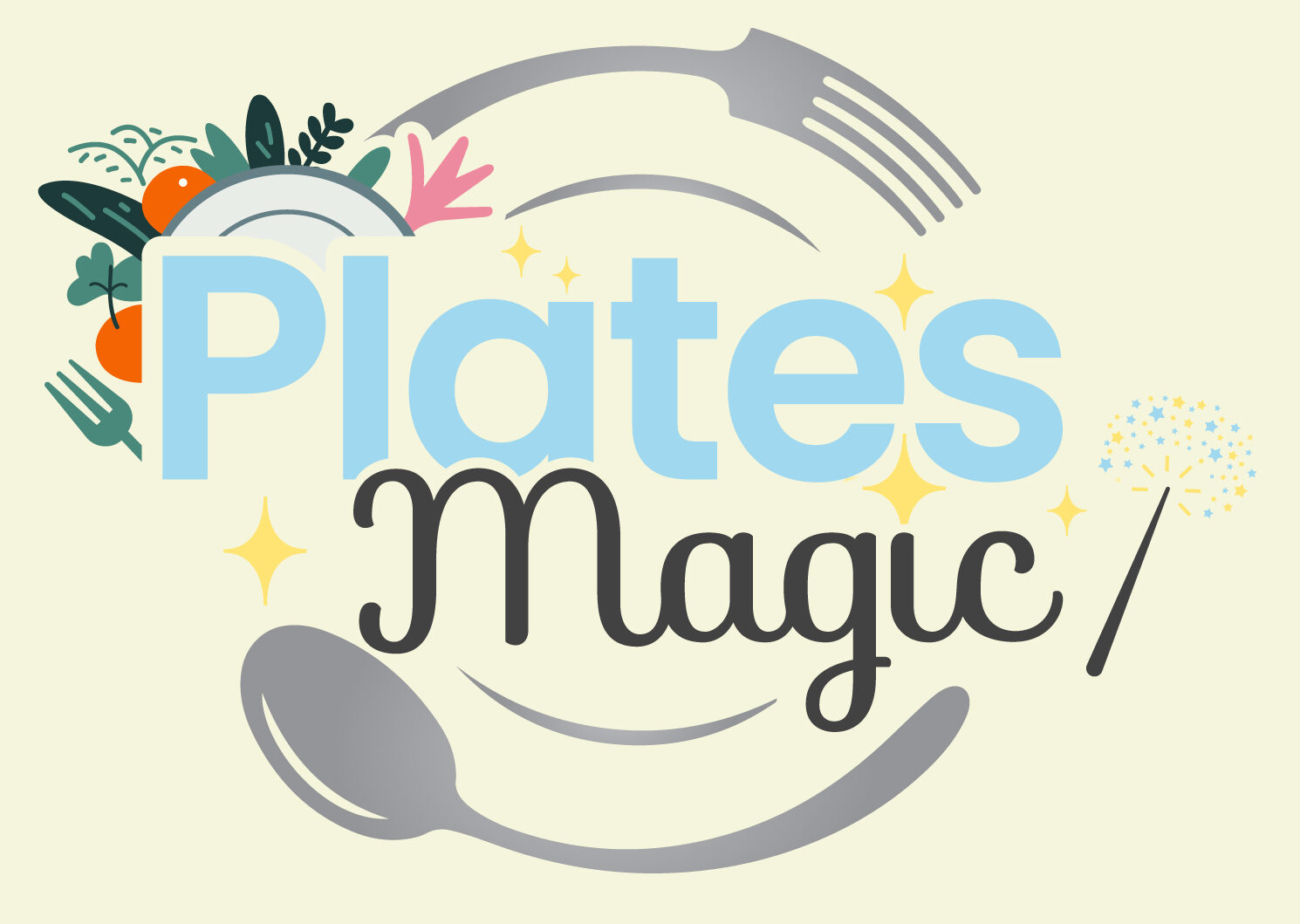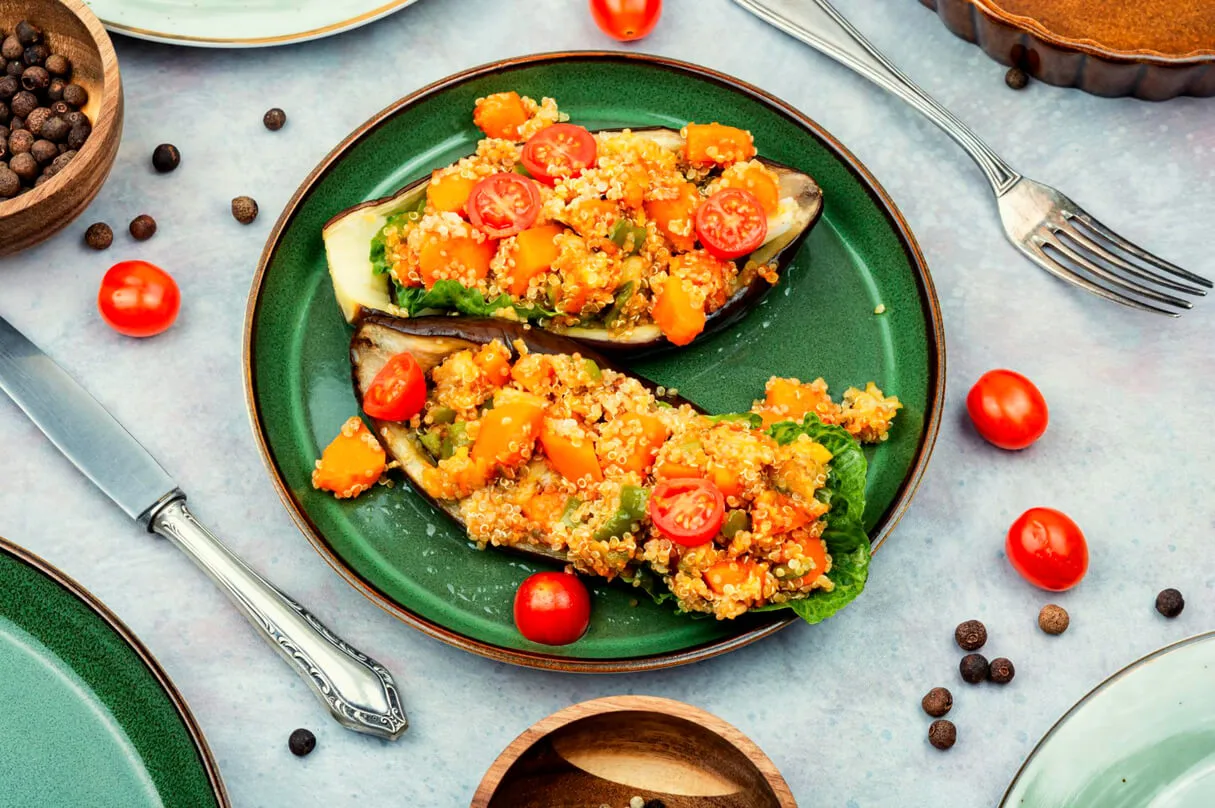Introduction
Eggplant parmesan is a timeless dish cherished for its crispy texture, rich flavor, and satisfying layers of sauce and cheese. Vegan eggplant parmesan takes this classic to a new level, offering a cruelty-free twist without compromising on taste or texture. However, what is a substitute for eggs in breading eggplant? Recreating that signature crispy breading without using eggs can be a challenge, but with the right alternatives, it’s easy to achieve delicious results.
So, what is a substitute for eggs in breading eggplant? Eggs typically serve as a binding agent, ensuring breadcrumbs stick firmly to the eggplant slices. However, there are plenty of plant-based alternatives that can replicate this effect beautifully. From aquafaba to flaxseed mixtures, these substitutes allow you to enjoy a crispy, golden coating without relying on animal products.
In this article, we’ll uncover the best substitutes for eggs, provide a step-by-step guide to breading eggplant without them, and answer frequently asked questions about this process. Whether you’re baking, frying, or simply experimenting with vegan recipes, this guide will help you achieve perfect results every time. Get ready to make a dish that’s just as crispy and delicious as the original—while staying 100% plant-based.
Why Choose Vegan Eggplant Parmesan?
1.1 The Allure of Eggplant Parmesan
Eggplant parmesan has been a staple in kitchens for generations, celebrated for its satisfying combination of crispy breaded eggplant, savory marinara sauce, and gooey melted cheese. The texture of perfectly cooked eggplant—a tender interior with a crunchy exterior—makes it a standout dish on any table.
What makes this dish even better is its adaptability. With a few thoughtful substitutions, it can be transformed into a vegan-friendly delight. Vegan eggplant parmesan retains all the beloved flavors of the original while eliminating animal-based ingredients, making it suitable for those embracing a plant-based lifestyle. Plus, with the variety of vegan cheeses and egg substitutes available, achieving the perfect texture and flavor has never been easier.
1.2 Challenges in Veganizing the Recipe
The biggest hurdle in making vegan eggplant parmesan lies in the breading process. Traditional recipes rely on eggs to coat the eggplant slices, acting as a glue for breadcrumbs to adhere to the surface. Without eggs, breadcrumbs can slide off during cooking, resulting in uneven breading and less crispiness.
Thankfully, there are numerous substitutes for eggs in breading eggplant. Options like aquafaba, flaxseed mixtures, and plant-based milks create an effective binding layer, ensuring the breadcrumbs stick securely. These alternatives not only work but also enhance the dish’s appeal by offering a healthier and allergen-friendly approach to cooking.
By understanding the role of eggs and choosing the right substitutes, you can easily overcome these challenges and create a vegan version of this classic dish that’s just as crispy, flavorful, and satisfying.
What is a Substitute for Eggs in Breading Eggplant?
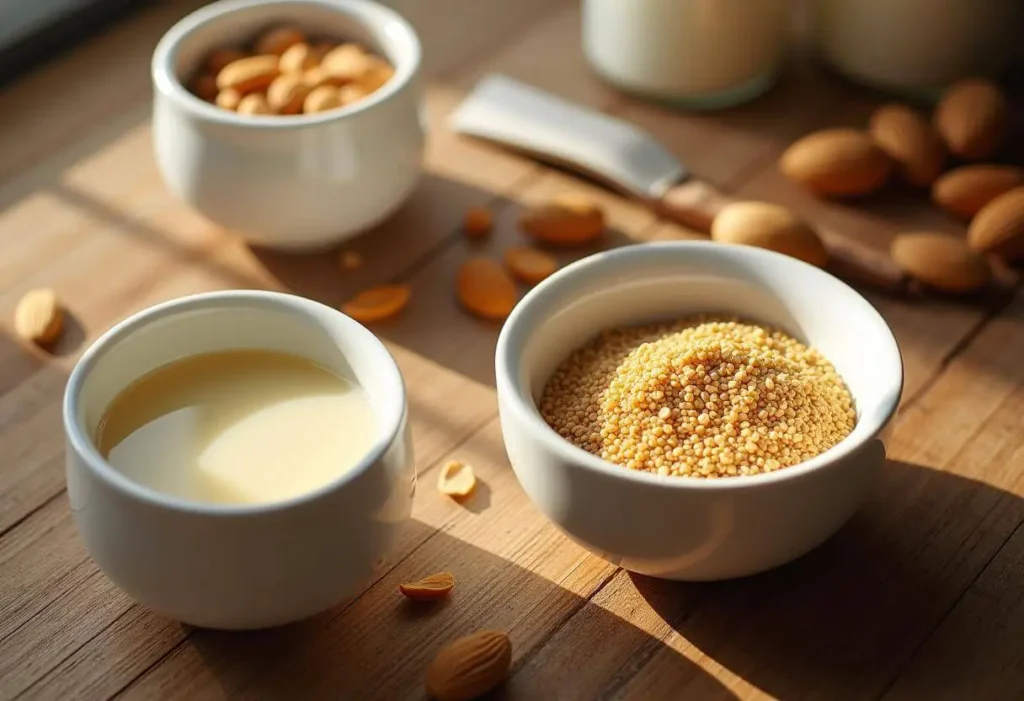
2.1 The Role of Eggs in Breading
In traditional recipes, eggs serve a dual purpose in the breading process. First, they act as a sticky layer that adheres breadcrumbs to the eggplant slices, ensuring a uniform coating. Second, they add richness to the dish and contribute to the golden-brown color when cooked. Without eggs, achieving that even breading can seem daunting, as breadcrumbs may not stick or may fall off during cooking.
Thankfully, there are several vegan-friendly substitutes that replicate the adhesive quality of eggs. These options create a similar “glue” effect to hold the breadcrumbs in place while enhancing the overall texture and flavor. Let’s explore the best alternatives and how to use them effectively.
2.2 Best Vegan Substitutes for Eggs in Breading
Aquafaba (Chickpea Water)
Aquafaba, the liquid from a can of chickpeas, is a favorite among vegans for mimicking egg whites. Its slightly viscous texture works well to coat eggplant slices and hold breadcrumbs in place. Simply whisk aquafaba until slightly frothy, then dip the eggplant slices before adding breadcrumbs.
Why it works: Aquafaba’s protein content helps it bind breadcrumbs effectively, making it ideal for both frying and baking.
Plant-Based Milk and Flour
A mixture of unsweetened plant-based milk (such as almond, soy, or oat milk) and flour creates a thick batter-like coating. Dip the eggplant in the milk-flour mixture, then press it into breadcrumbs for an even, crispy layer.
Why it works: The flour thickens the milk, providing a base for breadcrumbs to cling to. This method is versatile and works well in baked recipes.
Ground Flaxseed or Chia Seeds
Combine 1 tablespoon of ground flaxseed or chia seeds with 2.5 tablespoons of water to create a gel-like mixture. Let it sit for 5–10 minutes before using it as a substitute for eggs.
Why it works: This mixture becomes sticky, mimicking the texture of eggs while adding a mild, nutty flavor to the dish. It’s particularly effective for frying.
Cornstarch Slurry
A simple mix of cornstarch and water (1 tablespoon cornstarch to 2 tablespoons water) creates a smooth slurry that acts as a binding agent. Dip the eggplant slices into the slurry before coating them with breadcrumbs.
Why it works: Cornstarch forms a thin, adhesive layer when cooked, resulting in a crispy, even coating. It’s an affordable and easy option for both frying and baking.
2.3 Tips for Success with Egg Substitutes
- Consistency is key: Ensure your substitute isn’t too runny or too thick. Aim for a consistency that can coat the eggplant evenly without dripping excessively.
- Use the right ratios: Follow recommended ratios (e.g., 1 tbsp flaxseed + 2.5 tbsp water) to avoid a coating that’s too thin or sticky.
- Frying vs. Baking: For frying, flaxseed or aquafaba work best due to their binding strength. For baking, plant-based milk and flour provide a light and airy coating.
- Double-dip for extra crispiness: Dip the eggplant in the substitute, coat with breadcrumbs, and repeat for a thicker, crunchier breading.
By using these substitutes and techniques, you can achieve a perfectly breaded eggplant without relying on eggs.
Step-by-Step Guide to Breading Eggplant Without Eggs
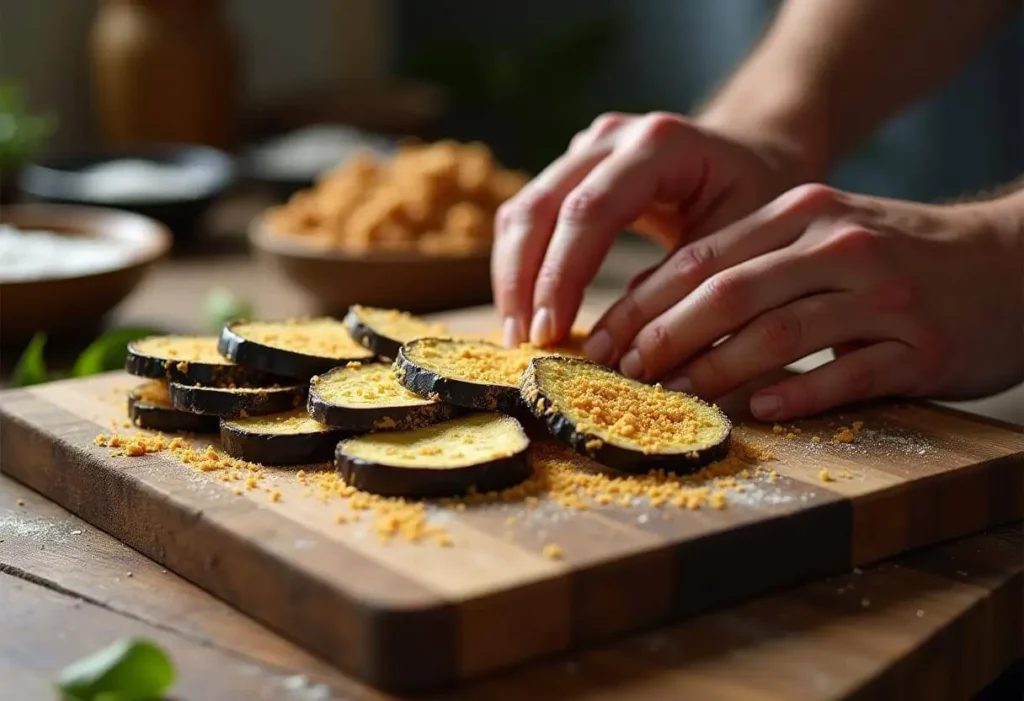
3.1 Preparing the Eggplant
Proper preparation is the foundation for perfectly breaded eggplant. Eggplant can have a slightly bitter flavor, which can be eliminated through simple pre-cooking techniques:
- Blanching or Salting: Slice the eggplant into ¼ to ½ inch rounds and sprinkle both sides with salt. Let the slices rest for 20–30 minutes to draw out excess moisture and bitterness. Rinse the slices under cold water and pat them dry with a clean towel. Alternatively, blanch the slices in boiling water for 1–2 minutes, then cool them in an ice bath.
- Uniform Slicing: Cut the eggplant into even slices to ensure consistent cooking. Thicker slices take longer to cook and may result in an uneven texture, while thinner slices may burn easily.
3.2 Choosing Your Breading Layers
The breading process involves three essential layers to create a crispy and flavorful coating:
- Flour Layer: Start by coating each eggplant slice with a light dusting of flour. This step helps the egg substitute adhere better to the surface. Use all-purpose or gluten-free flour for versatility.
- Substitute Layer: Dip the floured eggplant slices into your chosen egg substitute. For aquafaba, whisk until frothy and submerge the slice completely. For flaxseed or cornstarch slurry, ensure the coating is even without overloading the slice.
- Breadcrumb Layer: Press each slice firmly into a plate of breadcrumbs, ensuring even coverage. For extra crunch, use panko breadcrumbs or a mix of regular breadcrumbs with crushed cornflakes or nutritional yeast for added flavor.
3.3 Cooking Methods: Baking vs. Frying
Baking: The Healthier Option
Baking is ideal for a lighter, oil-free version of breaded eggplant. Here’s how to achieve crispiness in the oven:
- Preheat your oven to 400°F (200°C).
- Place the breaded slices on a parchment-lined baking sheet, leaving space between each slice.
- Spray or brush a light coating of oil on both sides to enhance crispiness.
- Bake for 20–25 minutes, flipping halfway through to ensure even browning.
Pro Tip: For ultra-crispy results, place the slices on a wire rack over the baking sheet to allow hot air to circulate around them.
Frying: The Traditional Method
Frying delivers the signature golden-brown crust associated with traditional eggplant parmesan. Follow these steps:
- Heat a skillet with ½ inch of oil (e.g., vegetable, canola, or avocado oil) to 350°F (175°C).
- Fry the breaded slices in small batches, cooking for 2–3 minutes per side until golden brown.
- Remove and place on a paper towel-lined plate to absorb excess oil.
Pro Tip: Avoid overcrowding the pan, as this lowers the oil temperature and results in soggy breading. Use a thermometer to maintain consistent heat for even cooking.
By mastering these steps, you can create perfectly breaded and cooked eggplant slices without relying on eggs. Whether baked or fried, your vegan eggplant parmesan will have the same crispiness and flavor as its traditional counterpart.
Popular Vegan Egg Substitutes and Their Benefits
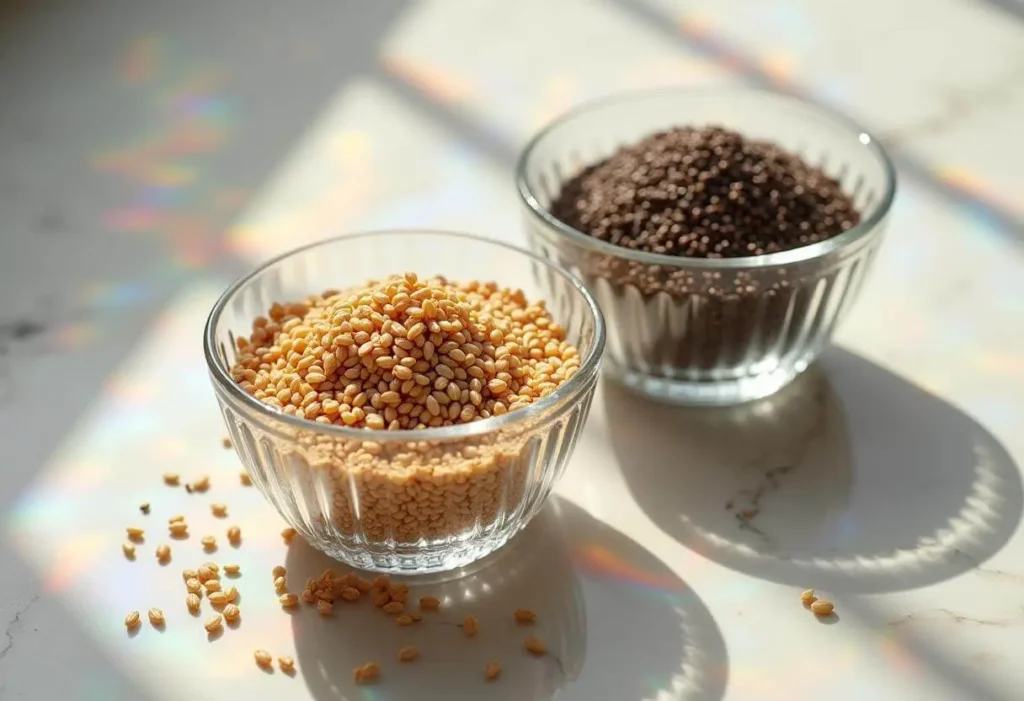
Aquafaba, the liquid drained from canned chickpeas, is one of the most versatile vegan egg substitutes. Its slightly viscous texture closely resembles that of egg whites, making it an excellent binding agent for breading eggplant.
How to Use Aquafaba for Breading Eggplant:
- Whisk aquafaba until frothy to improve its ability to coat the eggplant slices evenly.
- Dip the eggplant directly into the whisked aquafaba before applying breadcrumbs.
Benefits:
- Aquafaba’s light and airy texture creates a delicate coating for the eggplant, making it ideal for both baking and frying.
- It’s cost-effective and reduces food waste since it’s a byproduct of canned chickpeas.
This resouce provides a credible, research-backed overview of aquafaba’s properties and its functionality in plant-based recipes.
Flaxseed and Chia Seeds: Perfect for Eggplant Breading
Flaxseed and chia seeds are excellent egg substitutes, known for their ability to form a gel-like consistency when mixed with water.
How to prepare the mixture:
- Combine 1 tablespoon of ground flaxseed or chia seeds with 2.5 tablespoons of water.
- Let the mixture sit for 5–10 minutes until it thickens.
Nutritional benefits:
- Both seeds are rich in omega-3 fatty acids, fiber, and antioxidants, adding a nutritional boost to your dish.
- They create a sturdy coating, making them perfect for frying as the breading sticks firmly to the eggplant.
This Healthline article explains the health benefits of flaxseeds and chia seeds, supporting the discussion of their nutritional value in the article.
4.3 Other Options
Unsweetened Plant Milk and Flour
Mixing plant-based milk (such as almond, soy, or oat) with a small amount of flour creates a thick batter for breading.
- This method works well for baked recipes, providing a light and airy coating.
- Add a pinch of salt or spices to enhance the flavor.
Vegan Yogurt
Vegan yogurt, especially plain varieties, can act as a sticky base for breadcrumbs.
- Its tangy flavor adds depth to the dish while providing excellent adhesion.
- It works best when paired with a light breadcrumb layer.
Tofu for Dense Coatings
Silken tofu can be blended into a creamy, egg-like consistency.
- Coat eggplant slices in the tofu mixture for a thick, robust layer of breading.
- This method is particularly effective for recipes where a heavier coating is desired.
By experimenting with these substitutes, you can find the perfect option that aligns with your cooking style and desired texture. Each substitute brings its unique benefits, allowing for endless creativity in vegan cooking.
FAQ: Substitutes for Breading Eggplant Without Eggs
5.1 What can you use instead of egg when breading?
There are several vegan-friendly alternatives to eggs for breading eggplant. Aquafaba, ground flaxseed, chia seeds, plant-based milk with flour, and cornstarch slurry are some of the most effective options. These substitutes work by creating a sticky coating that allows breadcrumbs to adhere to the eggplant slices. Each method offers unique benefits, such as aquafaba’s light texture or flaxseed’s nutritional value, making them ideal for various cooking styles.
5.2 What is the best substitute for eggs?
The “best” substitute depends on the cooking method. For frying, flaxseed and chia seed mixtures work exceptionally well because they create a strong, sticky layer that holds up in hot oil. For baking, aquafaba and plant-based milk with flour are ideal, as they provide a lighter coating that crisps up beautifully in the oven. Versatility and personal preference play a big role—experiment with substitutes to find what works best for your recipe.
5.3 How to make breadcrumbs stick without eggs?
To ensure breadcrumbs stick without eggs:
- Start by coating the eggplant slices in a thin layer of flour to create a dry base.
- Use a vegan substitute like aquafaba or flaxseed gel to act as the “glue” between the flour and breadcrumbs.
- Press the eggplant firmly into the breadcrumbs, ensuring even coverage.
Double-dipping (substitute → breadcrumbs → substitute → breadcrumbs) can also help achieve a thicker, crispier layer.
5.4 What is a vegan egg substitute for breading?
Store-bought vegan egg replacers are convenient and reliable. Brands like JUST Egg or Bob’s Red Mill Egg Replacer can be mixed with water to create a texture similar to beaten eggs. These products are formulated for versatility and work well in breading, frying, and baking applications.
Whether using pantry staples or store-bought options, there’s no shortage of ways to bread eggplant without eggs.
Pro Tips for Perfect Vegan Eggplant Parmesan
Achieving restaurant-quality vegan eggplant parmesan is all about the details. These pro tips will help you master the dish with ease and confidence.
1. Use Parchment Paper for Baking
When baking breaded eggplant slices, place them on a parchment-lined baking sheet. This prevents sticking and ensures easy removal without damaging the crispy coating. For added crispness, use a wire rack over the sheet to allow air circulation around the slices.
2. Master the Double-Dip Method
For an ultra-crispy coating, try the double-dip method:
- Coat each slice in flour to create a dry base.
- Dip it into your chosen egg substitute (aquafaba, flaxseed gel, etc.).
- Press the slice into breadcrumbs to cover it evenly.
- Repeat the substitute and breadcrumb steps for a second layer of breading.
This technique creates a thicker, crunchier crust that holds up well during baking or frying.
3. Add Flavor to Your Breadcrumbs
Enhance the flavor of your breading by mixing seasonings directly into the breadcrumbs. Garlic powder, Italian herbs, paprika, and nutritional yeast add depth and complement the eggplant’s natural flavor. For a spicy kick, include a dash of cayenne pepper.
With these tips, your vegan eggplant parmesan will turn out perfectly crispy, flavorful, and irresistibly delicious every time.
Why Vegan Eggplant Parmesan is Worth It
Vegan eggplant parmesan proves that you don’t need eggs or dairy to create a delicious, comforting dish. With the simplicity of substitutes like aquafaba, flaxseed, or plant-based milk, replicating the crispy, flavorful breading of traditional recipes is easier than ever. These alternatives not only work seamlessly but also open the door to creativity in your cooking.
Beyond its ease, vegan eggplant parmesan aligns with a healthier and more ethical lifestyle. Choosing plant-based substitutes eliminates cholesterol and reduces saturated fats, making this dish a heart-friendly option. Additionally, by skipping animal products, you contribute to environmental sustainability and promote compassionate eating habits. It’s a win-win for both your health and the planet.
Experimentation is key to making this dish your own. Try adding spices to your breadcrumbs, swapping in gluten-free flour, or layering the baked slices with your favorite vegan cheese and marinara. These small tweaks let you tailor the dish to your tastes while maintaining its classic appeal.
Whether you’re a seasoned vegan or just exploring plant-based cooking, vegan eggplant parmesan is a satisfying, versatile dish that showcases how easy and rewarding it can be to embrace vegan alternatives.
Conclusion
Substituting eggs in breading is not only simple but also opens up endless possibilities for creating delicious vegan dishes. With easy-to-use alternatives like aquafaba, flaxseed gel, and plant-based milk, you can achieve the same crispy, golden breading that makes eggplant parmesan a classic favorite. These substitutes are versatile, affordable, and work seamlessly for both baking and frying, proving that going egg-free doesn’t mean compromising on flavor or texture.
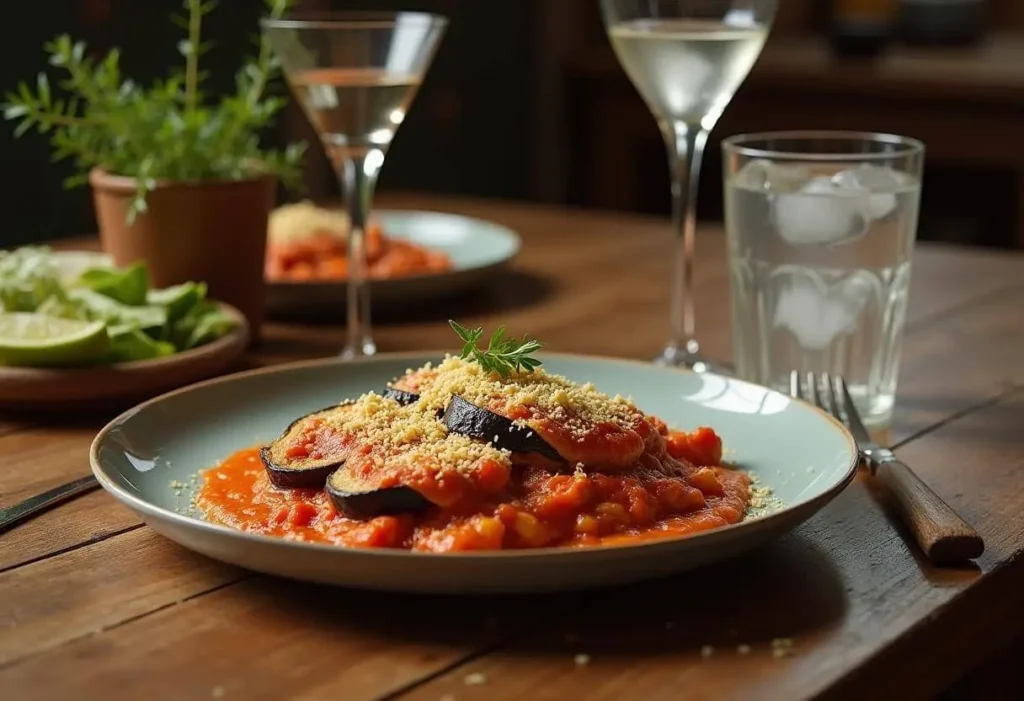
Vegan eggplant parmesan is a dish that showcases the creativity and adaptability of plant-based cooking. By making small changes to traditional recipes, you can enjoy meals that are not only healthier but also kinder to animals and the environment. Whether you’re new to vegan cooking or a seasoned chef, this guide provides all the tools you need to make your eggplant parmesan a success.
Now it’s your turn to try these techniques in your kitchen. Experiment with the substitutes, customize the flavors to your liking, and create a dish that’s uniquely yours. Once you’ve mastered it, share your experience and inspire others to embrace plant-based cooking. With just a few simple steps, you can enjoy a satisfying, flavorful, and cruelty-free version of this beloved classic.
